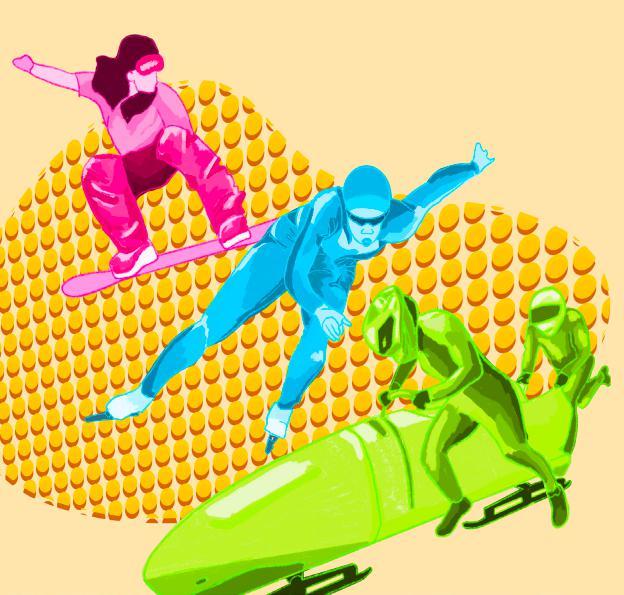
41 minute read
the intersection of racism and sexism as students at LM
Why mask? It’s time to ask Compliance with the science
Thomas Swope Mathematics
Advertisement
On March 8, 2020, during the early stages of the COVID-19 outbreak, Dr. Anthony Fauci stated during an interview with 60 Minutes that “there’s no reason to be walking around with a mask.” On April 3 of that year, the CDC updated its guidance on facial coverings, recommending Americans wear facial coverings “in public settings when around people outside their household, especially when social distancing measures are difcult to maintain.” Dr. Fauci also appeared on Fox & Friends and stated that viewers should “wear some sort of facial covering when you’re in public and can’t socially distance, because of new information that the virus can actually be spread even when people just speak as opposed to coughing and sneezing.” In July of 2020, the CDC said “cloth face coverings are a critical tool in the fght against COVID-19 that could reduce the spread of the disease, particularly when used universally within communities.” Dr. Fauci and the CDC have credited a growing understanding of the virus and new evidence for these changing guidelines.
The CDC’s website cites nine studies as evidence for the efcacy of wearing masks to slow the spread of COVID. The frst study cited was done in Bangladesh in late 2020. In the study, approximately 340,000 individuals from 600 villages were broken into a control group and an intervention group. Over an eight-week period, the study did fnd increased occurrences of COVID in the non-masked control group. The control group had 1,106 symptomatic individuals. The masked group had 1,086. There was a diference of twenty cases. This represents 0.0059% of the study’s population, or a 1.8% increase in infection rate. Additionally, the CDC failed to mention that the masked group also socially distanced and received additional education, while the control group did neither. If we were to apply the change in spread that was seen in the Bangladesh study to our school, we would see an increase of approximately 0.09 COVID-19 cases over an eight-week period based on the Bangladesh population’s infection rate. Extended over the school year, there would be 0.44 more cases of COVID-19 if the school did not socially distance or wear masks. Alternatively, you could multiply the number of COVID cases by 1.018.
A recent study in Denmark which consisted of 3,030 participants wearing masks and 2,994 not wearing masks found that “the diference observed was not statistically signifcant.” A study conducted by the University of Louisville College of Arts and Sciences, which made use of data from the CDC, found that “case growth was not signifcantly diferent between mandate and non-mandate states at low or high transmission rates, and surges were equivocal.” A May 2021 study from the CDC from 160 Georgia schools found that incidence of COVID-19 for students in schools mandating masks “was not statistically signifcant compared with schools where mask use was optional.”
In addition to the growing evidence that mask mandates do not slow the spread of COVID in any meaningful way, experts have increasingly begun warning about the side-efects of masking students, citing negative impacts on social, emotional, and mental development. These side efects should not be understated or ignored. Drs. Neeraj Sood and Jay Bhattacharya recently asserted, “Masking is a psychological stressor for children and disrupts learning. Covering the lower half of the face of both teacher and pupil reduces the ability to communicate. Specifcally, children lose the experience of mimicking expressions, an essential tool of nonverbal communication. Positive emotions such as laughing and smiling become less recognizable, and negative emotions get amplifed. Bonding between teachers and students takes a hit. Overall, it is likely that masking exacerbates the chances that a child will experience anxiety and depression, which are already at pandemic levels themselves.” There can be little argument that teens have been heavily impacted by the interventions that have been put in place to fght COVID. Increased isolation and stress has led to a 22.3 percent increase in ER trips for suicide attempts in the summer of 2020 compared to the summer of 2019. There was a 39.1 percent increase during the winter of 2020 compared to the previous winter. An NWEA study showed that the average student was three to six percentiles behind in reading and eight to twelve points behind in math, which translates to being four months behind in reading and fve months behind in math.
The CDC’s guidance on masks has continued to change throughout the pan-
Caryl Shepard ’22 Editor-in-Chief
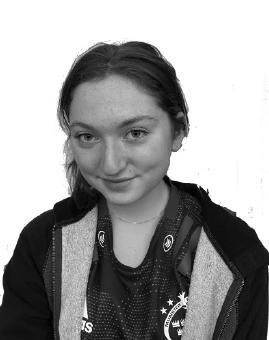
While 2022 has brought relative normality to school life so far, elements of school during the peak of the pandemic are still evident: mask mandates, case counts, vaccination rates, and the lingering threat of returning to virtual school all inhibit the prospect of fully returning to pre-2020 LM. Naturally, many people have started to question whether LM can begin to lift mask mandates as vaccination rates increase and case counts decrease in order to regain a sense of normality. While some now consider the plastic garments that adorn our faces more of an accessory than a necessity, it is essential that LM continues to uphold its mask mandate in order to protect public safety and uphold our duty as citizens.
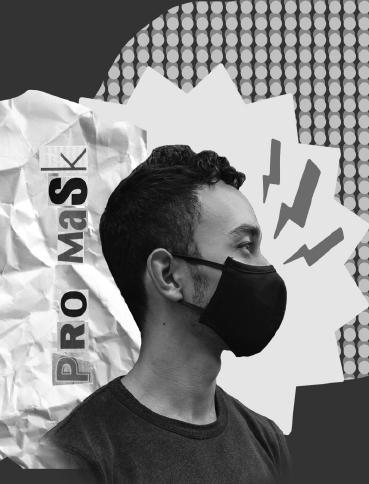
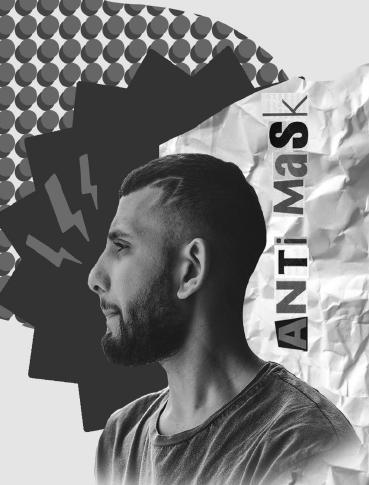
Graphics by Emma Liu ’22/Staf
demic. On May 13, 2021, they advised that fully vaccinated people can stop “wearing a mask or physical distancing.” CDC director Dr. Rochelle Walensky told reporters that “anyone who is fully vaccinated can participate in indoor and outdoor activities, large or small, without wearing a mask or physically distancing. If you are fully vaccinated, you can start doing the things that we have stopped doing because of the pandemic.” In December, she also tweeted that “cloth masks are little more than facial decorations and should not be considered an acceptable form of face covering.”
We’re now almost two years into what was initially billed as “two months to fatten the curve.” During these two years, businesses and schools have closed. We’ve been told to socially distance and wear masks. At LM, we’ve canceled feld trips, graduations, and sports seasons. We now have vaccines that greatly reduce the severity of COVID. Ninetynine percent of new infections are currently Omicron, whose main symptom is a runny nose. COVID is not going away; it’s here to stay, just like the fu. We need to decide how we should address it moving forward. Emotions and fear should not drive such important decisions; instead they should be made based on science and data. The science is clear—it’s time to end the mask mandate.
Even as vaccination rates in our community continue to climb, it remains undeniable that the threat of COVID-19 lingers behind the rapid tests and booster shots. Despite the decreasing case numbers nationwide (even in the wake of the Omicron variant), the Center for Disease Control still recommends universal indoor mask use for all faculty and students in K-12 schools regardless of vaccination status, and the American Academy of Pediatrics urges that all students above the age of two wear a mask. These recommendations are not voiced without sufcient evidence: numerous studies have shown that mask wearing notably reduces the spread of COVID-19. A study of North Carolina districts found that, of over one million students and staf members in public school districts from March to June 2021, over 7,000 adults and children acquired the virus but still attended school while infectious, resulting in more than 40,000 fellow student and staf members having to quarantine. However, through testing and contact tracing, only 363 children and adults exposed to those 7,000 infected peers actually contracted the virus. This is indicative of the efectiveness of masks: had all members in the study not worn a mask, the 5 percent rate of transmission would have been much higher. It is important to note that in all of these districts, no additional cautionary measures besides masking were taken, and rates of vaccination were not uniform among every school. Masking, however insignifcant it may seem, clearly mitigates the spread of the novel coronavirus.
What would happen if masks were not mandated by the school district? Despite LM’s remarkably high vaccination rate, this move would still present a gamble to the already-transitioning district. As evidenced by a high school in Israel, reopening without mask mandates remains a risky move. When the school reopened without instituting masking requirements and social distancing, they promptly had to shut down again after ten days after reporting a large COVID-19 outbreak of 153 students (13.2% of total student population) and 25 staf members (16.6% of total faculty population). Even in the era of the vaccine, lifting mask mandates does not guarantee a lower rate of transmission. Recently, when mask mandates were made voluntary in states like Missouri and North Carolina, both COVID-19 cases and days missed due to quarantine increased, prompting many districts to reinstate mandatory mask mandates. Thus, the data is clear: wearing masks reduces the spread of COVID-19 and creates a safer schooling environment.
Aside from the plethora of data emphasizing the efcacy of mask-wearing, it is our duty as citizens of a functioning society to look out for our fellow humans. By living in a society, we relinquish certain freedoms in order to maintain a society. We give up a sense of complete freedom to live peacefully with others and maintain a governing body. As stated by renowned philosopher Jean Jacques Rousseau in his work The Social Contract, we relinquish our natural freedom for a new sense of civic freedom. Part of this civic duty is ensuring that you do not willingly harm your neighbors or acquaintances. While you may not be concerned as to whether or not you catch COVID-19, or consider it your personal right to not wear a mask, it is your duty to take the necessary precautions to ensure that your neighbor does not acquire the virus. Just as you would not infict violence on a neighbor, you should not expose your neighbor to a public safety risk. Therefore, it remains essential to undergo the minimal personal discomfort associated with wearing a mask to uphold our end of the societal contract.
Finally, some who still oppose mask mandates despite the innumerable evidence and pleas to consider the more vulnerable members of society point to other evidence which undermines the efficacy of mask-wearing. But, even if masks are not 100 percent foolproof, what is the harm in continuing to wear them? According to the Mayo Clinic, numerous studies have shown that wearing face masks produces no negative effects. Therefore, even if masks seem somewhat uncomfortable, LM guarantees its safety and ability to uphold its end of the social contract by maintaining its current masking guidelines. Additionally, while case counts in Montgomery County continue to decline, eliminating mask guidelines now could result in a return to midDecember case count numbers, where the Omicron variant led cases to average 1,532 daily, over 1,000 more cases than today’s average. To protect others in Montgomery County and keep case counts low, it is imperative that LM maintains its current masking guidelines. With substantial evidence supporting the benefits of mask-wearing in schools and the necessity to uphold our end of the social contract, LM must continue to operate with its current masking guidelines.
Libraries: silence is the only way

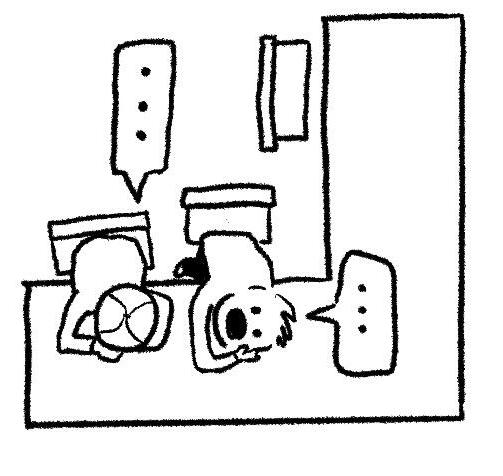

Mia Hail ’23 Arts and Entertainment Editor
The LM library currently serves as a collaborative environment filled with boisterous students clamoring together at the small round tables. During free periods and lunches, dozens of students seek out the library as a place to gather with their friends, not necessarily a place to do some quiet studying. But should the library become a quiet study area dedicated to focused
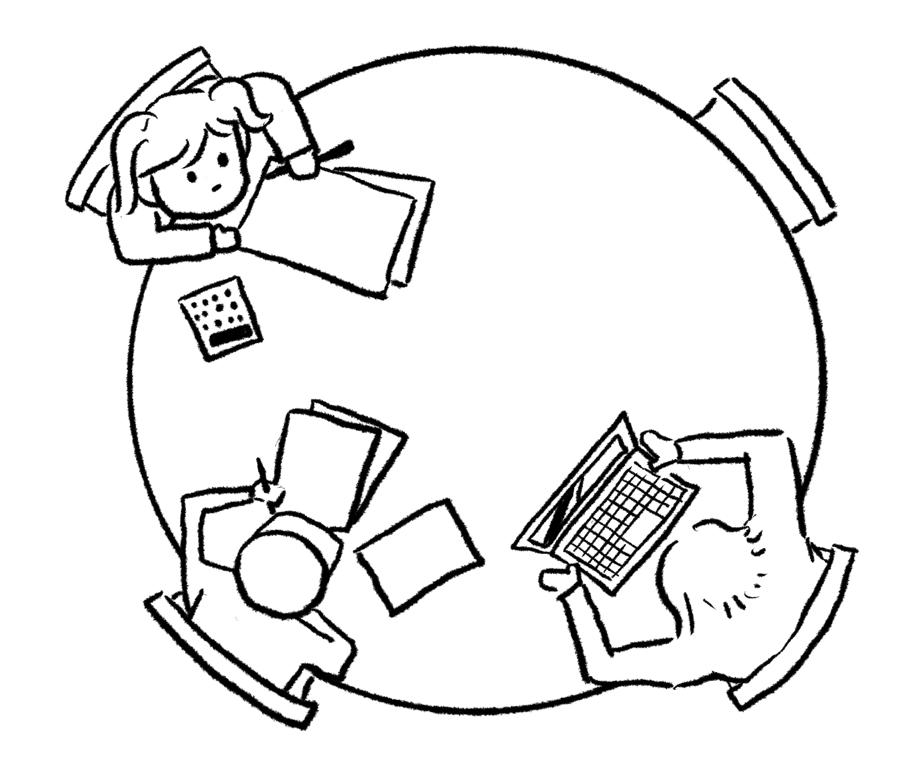
Graphics by Emmi Wu ’23/Staf
work? Typically a library is a place to study, but LM is unique in the sense that most use it as a space to hang out with friends. LM should retain that idea, but perhaps not throughout the entire day. Libraries are universally acknowledged as spaces where people go to be productive, yet at LM it’s hard to find a quiet spot in the library at any point during the day. While LM has plenty of tables around the hallways designated for students to use during free periods, the hallways can be distracting: people constantly walk by and the voices of teachers carry through their open doors. Right now, it can be difficult to find a spot during a free period to work undisturbed. However, if the library was available as a quiet space throughout the day, it would provide a great location for students wishing to work in a designated area. Understandably, the library does provide a spot for students to work collaboratively, which is an aspect that should definitely remain in place. Students should be able to collaboratively work on something like a group project or the same assignment, not just goof off with their friends. During Lunch and Learn, the library should definitely maintain its location as a prime spot to eat lunch with friends. But currently, any time you walk into the library it feels like lunch for the people who are in there, which isn’t the learning space some people search for. Though many students vehemently oppose the suggestion of making the library a quiet learning place, it’s important to remember that the purpose of a library is to be a quiet learning environment. Noah Barkan ’24 shares his thoughts: “I’m all for collaboration but there are plenty of areas around the school where people can chat. The library should be an area where people can find some peace and quiet. That being said, it’s hard to keep an area quiet when so many people are shoved in there.” There are so many areas outside of the library open to students that want to talk aloud and not bother others, such as the courtyard or the upper atrium, but the library truly should be kept for people who want a space to focus. Switching the library to become a permanent study area would help boost student motivation and focus. For those struggling to be productive during free periods, seeing other students working or at least promoting a learning
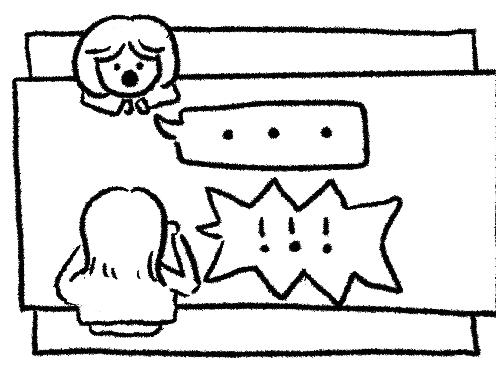
environment in the library could potentially help increase their own motivation. In the past year, the library has become a spot where students are expected to go when teachers aren’t there. This can actually help students complete their assigned work in the time given instead of becoming distracted. Overall, there are already many spaces throughout LM where students can go if they want to take a break from school work, but the library should not be one of them. The library should be a space where students can find guarenteed quiet and focus, not groups of people shouting.
School spirit - more vocal and more visual

Joy Donovan ’23
Seventy kids pack into four rows of bleachers at 7:00 p.m. on a Tuesday night. They don matching face paint, Santa hats and Halloween costumes alike, all for the chance to watch the state championship-hopeful LM boys’ basketball team send another Central League rival out the KBG doors with their tails between their legs. LM has a lot to brag about, and for upperclassmen who haven’t had any in-person games since winter 2020, there’s a lot to celebrate. The student section, infamously dubbed the Dawg Pound, has been a staple of school culture at LM for years now, and with the introduction of social media, Aces can now join in on the school spirit more easily than ever before. The student-run fan account @lmdawgpound, which began on September 21st of this past year, boasts nearly 600 followers on Instagram and receives upward of 300 likes per post. The account is powerful, moreso than rival accounts on Instagram, and it’s due in no small part to the unwavering dedication of its followers. For each disgruntled comment the account receives, ten comments of support spring up in its place, like a maroon and white-blooded hydra spitting out tongue-in-cheek remarks. This isn’t the act of the managers of the account, nor a few diehard keyboard warriors—this is the act of something far greater: community. This is the LM pride and school spirit that we’ve missed out on these past few years, and frankly, I think it’s overdue. I’ve never been a school spirit person. When friends from Haverford and Garnet Valley tried to drag me to football games, I feigned migraines and evil exes just to avoid being crammed onto metal bleachers in the cold. This year, however, I had a sudden change of heart. Maybe it was the months in quarantine, or the weeks upon weeks of changing schedules and closures; maybe I just longed for the nostalgia of high school memories I never made. Regardless, the theme of that first football game in September was whiteout and for some reason—be it the toxic fumes of the communal face paint that had been spread across my cheeks by a person I’d never talked to before or some other act of God—I embraced the overwhelming sense of camaraderie that came with being all together again. I know there’s talk of restorative healing, of the collective trauma induced by the lockdown, particularly on teenagers; quite frankly, this is healing. Doing normal teenager things is healing. All that being said, we need to take a look at the way we talk about sports at LM. The Instagram account is quoted as saying that “the LM Dawg Pound stands for gender equality in all ways possible,” but when women and girls close to players on opposing teams become bigger targets than the athletes themselves, it puts the whole idea into question. The people running the account are doing their part, but regardless of the nice sentiment, commenters will still make lewd remarks about a player’s mom from the sidelines and suggest that the girlfriends of Marple Newtown athletes perform sexual favors to compensate for a 62-32 loss. This is shockingly tame for high school bleacher banter, and to most of these comments, I didn’t even bat an eye. Unfortunately, misogynistic language is inherent to the way we talk about high school athletics. This “locker room talk” is pervasive and it hurts us more than we may realize. Sure, the Dawg Pound is open to all students, but when girls tell me how uncomfortable they feel walking to their car after a night game, I’m reminded that the bubble of camaraderie won’t protect me from the pointed needle of reality, nor will it protect the rest of the girls attending these games. At the end of the day, whether you’re an Ace or not, you’re still a girl in a high-intensity, male-dominated environment, and unless something changes about the dialogue surrounding sports culture at LM, the Dawg Pound will never truly be for everyone. How are we any different from the people we argue with in comment sections when our only distinction is the color of our t-shirts? I’m not saying that we can’t make fun of other teams or revel in our wins. I’m not even saying that we have to stray from offensive remarks and jests at opposing teams’ expense. I’m no saint. Some of you have seen my comments on the Instagram account or heard my remarks during games. At the end of the day, I’m a basketball fan first and an empathetic person second. All I’m saying is that it’s hypocritical to act like we’re exempt from criticism. I’m saying that we’re better than the way we’re acting. That being said, it’s clear that the Dawg Pound Instagram page isn’t going anywhere any time soon, and it’s time we embraced its potential for good. After talking with the various people behind the account, I think they agree. I have immense faith in the students of LM. I saw you all in the Marple Newtown comment section. Not only are you upsettingly funny, you support each other tirelessly, even people you don’t know. I have to commend the Dawg Pound Instagram founders for fostering a space of community like no other at LM. I haven’t seen this level of shared passion in quite some time. It’s clear that this account has the power to connect Aces like no other, and I think that we should do it the right way, so that we can create a more inclusive, more spirited, and more passionate Dawg Pound for classes to follow. “Well being a senior, I think we have to set an example for the younger classes and just instill more school spirit into them because we’ve noticed that it has been lacking in recent years. I don’t think there’s pressure because we love running the account, although we do acknowledge our large following and we try to set a good example,” says one of the founders of the account. If you ask me, I think they’re doing a hell of a job.
The Merionite A forum to forge change
Max Fishman ’22
Every inch of LM’s foundation is ostensibly wrought to provide us, the student body, with the best possible education. Fierce school board elections, sweeping administrative policy, and teachers’ union initiatives are forged by the heat of that task. Despite our direct experience with the effects of educational choices, we the students are formally left out of these negotiations. Recent student polls and feedback forms signify a step in the right direction; however, to truly help students soften the edges of this abrasive system, we need a forum that takes an active role in educating students and pushing for change. Since the very nature of a tiered school system quickly moves students out of the building, it’s difficult to build lasting and nuanced support for new policy. After all, each of us only care, and only need to care, about the often dissatisfactory portions of our high school experience for four short years. Considering that LMSD is unfathomably well endowed and frequently showered with national accolades, it feels almost contradictory to question its educational approaches. Consequently, it likely takes until sophomore year to begin to grasp why many students feel so dissatisfied. By the time juniors and seniors identify specific ways they’d like to see the school changed, they’re just about packed for college. Maybe they write an Op-Ed article, but soon enough, they’ll be off to Pitt or Penn. In a conversation last month, Kevin Grugan joked about the ever repeating cycle of The Merionite articles on important topics that he has witnessed throughout his tenure at LM. I asked him then–as I ask you now–to imagine a student-run forum, perhaps solidified by a dedicated time slot like that of Lunch and Learn or advisory, and how it could serve to coalesce and advance ideas to transcend the typical short-lived bursts of student support that accompany an ever-changing student body. As campaigns and knowledge of their status pass from upperclassmen to underclassmen, issues normally discovered too late could quickly bubble to the surface. What’s more, by bringing students together to actually discuss issues at hand, we could solidify our collective understanding and focus our strategies for implementing change instead of simply writing about it. Through research and argument driven debate, a student forum could help achieve a primary goal of the educational forge: critical thinking. In my experience, AP English Language and Composition (AP Lang) was a formative class not simply because of its intensive course in argumentation, but because it challenged me to deeply understand relevant issues like systemic racism, climate change, and educational practice. Principally, LM should provide their students with opportunities to be critical thinkers in the most immediate way possible, i.e., by encouraging them to challenge the system that they navigate nearly everyday. A pervasive student-run forum could emulate AP Lang’s critical process of research, discussion, and fabrication of ideas in an environment with tangible stakes. Tasked with uncovering avenues of educational improvement and presenting clear evidence for their proposed changes, students would put their skills to the test in real life. Now, apart from a world of
hypothetical essays, if a policy proposal gains ample support, the forum would also need to air student, parent, teacher, and administrator concerns–thereby forcing proponents of an idea to understand and disseminate the nuance attached to a specific change, like that which accompanies later school start times. Furthermore, by enlisting those most invested in the day-to-day of education to help discover and push for ideas, a wider range of thought would be uncovered, and it would be mulled over by a far greater number of individuals. Here lies the fundamental issue with LM’s present strategy: when the school depends on observational surveys, it merely samples a small population that is often poorly versed in educational strategy. However, by purposely
encouraging self-education and student-led discussion on the most pressing issues, a student forum stands to vastly increase general knowledge and will. Though our high school has certainly made great strides towards a fairer, less stressful education for students, much remains on the table. Just last year the school board postponed a proposal to push back our start times, citing the need for lights on Arnold Field to accommodate sports. Meanwhile, the Council for Racial Equity and Inclusion (CREI), as well as the administration itself, are striving to improve racial disparities within the district. While start times, lights, and CREI initiatives are the subject of sporadic discussion by students and teachers alike, other potential improvements often fly under the radar. As I mentioned in my previous essay, fundamental alterations to the grading system–changes that could be expanded by student involvement–are in the works. Even less discussed are the advances made by other schools. Some are vastly expanding and improving upon their academic seminar/individualized learning programs to improve students’ motivation. Others have begun dropping AP classes, choosing instead to develop their own flexible yet challenging high level courses–a fact I first learned from an article I read in my AP Lang class. Many of those same schools are weighing the effectiveness of homework and reevaluating certain class structures, all while further emphasizing student mental health as they experiment with alternatives. Such a list of possible alterations is nowhere near complete and not necessarily full of programs that we want or need. However, the present system will, more often than not, allow the worthy Graphic by Ilana Zahavy ’24/Staf among them to remain unconsidered. If a student-run forum were properly implemented, the issues at hand—and those beyond—would undergo far more intense ideation and scrutiny. A formal student forum would serve to stabilize the ebb and flow of support for potential changes; encourage students to practice critical thinking, research, and argumentation skills; and more efficiently share a multitude of complex ideas throughout the student body. By further empowering students to polish the rough edges of our experience, we could finally alleviate Grugan’s woes of a Merionite Groundhog Day. More seriously though, a student-run forum would ensure LM alumni “Go Forth to Serve” with practical experience in hammering out changes within the systems around them.
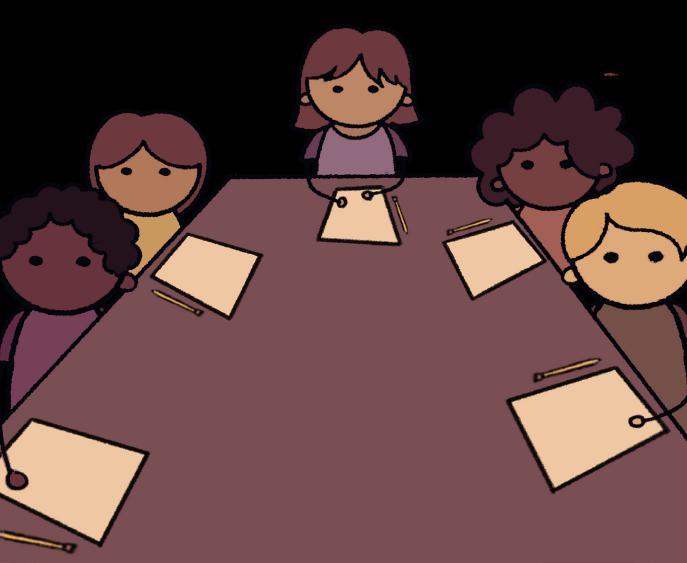
Midterms: send them of
Sarem Khan ’24
January is a month where people are beginning to return to their academic lives. With the weather beginning to drop to freezing temperatures, we are gifted with white crystals and vacations. The month of January should be celebrated and should be a relaxing month, as it is the start to a new year. For LM students, however, this is not possible, as the unpleasant test week known as midterms is just around the corner. A midterm exam is an assessment given in the middle of an academic grading term or near the middle of a quarter or semester. In the last week of January, two midterm tests were given to most students each day. Some teachers chose projects or presentations as their midterm rather than paper tests. The format of students’ midterm exams were determined by each teacher and what would be most beneficial based on their curriculum. No matter if the tests were easy or hard, midterms were still undesirable and put a substantial amount of unneeded stress on students. If a student had a B in a class, a bad midterm could drop it to a C. This is extremely unfair. Not only is this system unfair to the students who work hard all year and maintain good grades, but it also has negative physical and mental impacts on students. The mental impacts could include feeling overwhelmed and stressed and possibly sad if a student does not receive a good grade after the exam is over. The physical impacts could include feeling weak or tired due to a lack of sleep. The idea behind midterms is to prepare students for college since most college courses have a midterm. In college, this might be fine, but midterms in high school are simply not viable. For seniors, these tests fall near the deadline for midyear grade reports for regular decision college applications. Freshman, who are brand new to the school, are taking midterms within the first five months of being in high school, which they are not used to. Other students, such as sophomores and juniors, already have a heavy workload and all of this extra preparations for midterms are unmanageable during this time of the year. Some argue that midterms can be a valuable tool for measuring how well a student has mastered a concept. However, teachers give exams all semester long, which are more accurate in reflecting a student’s knowledge than a midterm exam. Grades accumulated throughout the semester are also more indicative of how well a student can study, organize time, persevere, and complete a challenge. Midterm exams need to be dropped from our school curriculum, as the negatives outweigh the positives.
The Merionite My life is a romantic comedy
Ruby Romano-Lehr ’24
After what felt like forever, the teacher fnally came and let us into the classroom. We stepped in and took our seats as he began taking roll. “Before we begin our lesson on the battles of the Civil War, we will be switching up seats since some of you,” he pointed to the back of the class, “are chit-chatters.” All of the three girls in the back shut up. Everyone groaned and stood up. I could hear one kid say that at least this will take up some time. The teacher called each student’s name one by one and pointed to where they would be seated for the entire next semester. It was a small class. A nice bunch of sixteen self-conscious kids in one room. The few good things about it were that we didn’t get an absurd amount of work, and the teacher would sometimes give out Reese’s Cups for getting questions right. It was also at the end of the day, and I could go straight home. Just me with my own thoughts and my cats sleeping on my binder. Depending on my mood, I’d put some music on, which would blare at the loudest possible volume my computer could handle. I’d have a warm cup of chamomile tea, and after I fnish my work, I’d watch the new Jaiden Animations video. Maybe depending on the time, I would also make some food or take a nap…
My mind snapped out of it when I realized which students were left to be seated. Me and my friend’s crush. Huh. Well this is fun and oddly cliché. Luckily she isn’t in this class; she’d be having a ft! I didn’t know this kid. I only knew his name, which was Lex. We shared only one class and that was a whole two years ago. All I did know was that according to my friend, if I could still even call her that, he was popular. Or well “popular,” and that he had TikTok hair. And that he always wore hoodies, took the greatest photos, had a giant house (probably a mansion), and was also kinda quiet. And according to my friend, he was hot. Not my words, hers. To be honest, I didn’t know and I didn’t care. The only thing that was running through my mind was, “PFFFFFFFFFFFT HA! THIS IS SO FUNNY! LOLLLLLLXD” Ok maybe not that last part but you get the point.
The teacher sat us next to each other and went about his lesson. After that, he gave us a small little partner project. “For your homework I want you to continue this with someone of your choice.” Everyone in the room looked around and found a partner, including the one person I knew best. Which left me with this guy. I already felt like a bit of an outcast in this class since the girls in it were so diferent then me. All I ever heard them talk about were celebrities and makeup. Nothing against that but all I could think was, is that it? But what could I do? I had plenty of other friends but it made picking partners hard since everyone would go straight to theirs and I had none in this class.
“So, you want to work together?” he asked me.
He nodded and the bell rang.
As I walked to my learn room, I noticed my friend Lillie walk out of since that was her last period. “Hey! How was class? Did you get any homework?” she asked me.
She looked at me confused. “What do you mean?”
“I have a partner project with Lex.”
I laughed and walked into my classroom. “Alright, alright I get the point. Wish me luck!”
After the teacher took roll and I got out my computer, put on some music, and waited for my partner to come into class. I eventually got impatient and started fnishing it on my own. Ten minutes later, I heard the door open. “Sorry I’m late. My teacher was out so I had to go to a diferent room and then sign out from there,” he said in a monotone voice. “Oh no worries!” I paused my music and took out my earbuds. “I got started without you so we don’t have much left. Do you want to get started with the coloring while I fnish up with the buildings?” “Sure.” We worked in silence for about twenty minutes, if you don’t count the several times I tried to break the ice and have a conversation. It was really for my friend’s sake, but a few things in the news eluded to me that I wouldn’t be talking to people for a very long time anyways. I attempted to ask him about music, books, even sports, and I know absolutly nothing about sports! And you know what this kid did? He gave me nothing, NOTHING to work of of. This wasn’t an exaggeration, it was a fact, a true statement. “So, do you listen to any good bands?” “Not really. Just hip hop and whatever’s on.” Graphic by Ilana Zahavy ’24/Staf Okaaaayy, I know nothing about hip hop and I don’t listen to any pop music. Maybe that wasn’t a good idea. “Read any good books?” “I don’t like reading.” Dangit, I’m out of all the staple I’m-not-like-the-other-girls type of questions. I’m gonna have to try some diferent tactics. “Do you like any sports?” “Nah I’m not really into them.” “What do you want to be when you’re older?” “I don’t know.” “This might be a bit rude but my friend wants to know why you broke up with-” And then if this situation couldn’t get anymore cliché, another girl walked in the classroom and started chatting him up. “Heeeeey Lex, are you free this weekend? My friends and I were going to go to Suburban Square and were wondering if you wanted to come.” She then proceeded to sit on top of my desk and plucked a piece of raspberry Ice Breakers gum into her mouth. If it wasn’t for the fact that this girl sat on my desk, MY DESK WHERE I WAS WORKING, I wouldn’t have minded. Minded as much, at least. See, middle schoolers firting with each other is cringy. I never really saw what it was like until this point. I had only heard from friends. And then I got to experience this frst hand. Plus in this case, it was weird and it made me very, VERY uncomfortable. To be honest, I didn’t care that she was ignoring me. And I certainly didn’t care that she was firting with him but just the way she talked and tried to get this guy to pay any lick of attention to her… it made me sick. And I was right in the middle of it. Lex didn’t seem to pick up on what this girl was doing. He sat there nonchalantly doing his work and occasionally looking up from coloring the paper. It was like she didn’t exist. A mirage, a glitch, or an echo. A ghost. “Yeah sounds good.” “Can’t wait to see you there ;). ” She hopped of of my desk and went over to a group of girls giggling in the back of the room. I want to die. We worked for a little bit longer until about 75 percent of the poster was colored. After a while I looked up from the section I was working on and saw the girl and her friends leave early. I swore the girl who was firting with Lex winked at him and then closed the door. I checked the clock and it said three on the dot. “It looks like there isn’t much more that needs to be done. I can work on it at home.” “Are you sure? I feel like you did all of the work and I didn’t help much…” “You did a lot actually! If it wasn’t for you we would be losing six of the twenty points for keeping it in black and white. I’m best at sketching and drawing things anyways.” He laughed. “You are pretty good at drawing. I probably would have failed without your amazing skills.” The bell rang and we parted ways as I walked home with him to the bus. By the time I was able to sit down and get out my brush-tipped markers to fnish, I thought to myself, this day didn’t feel real. In fact, I wouldn’t be surprised if this was all a dream, and I would wake up at any moment now. I pinched myself thinking that something would have happened. This feels like a story. Some Hollywood or Netfix director’s script. Whatever. At least it’s funny.
Midterm week or week of?
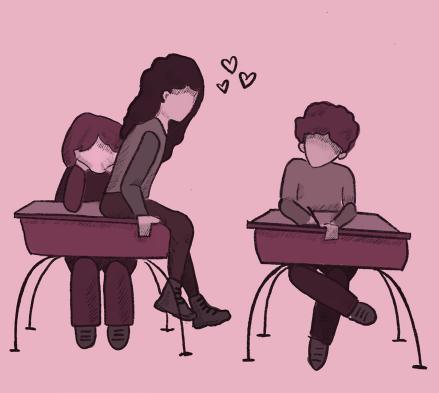
Crosby Johnson ’24
For some, midterms week is flled with stress and lots of studying, while for others, it is a week that can be taken advantage of, due to the limited amount of midterms they have combined with shorter school days. Midterms week consisted of a four day schedule in which there were two ninety minute testing sessions in the morning from 7:45 a.m. to 11:00 a.m. Students were given the afternoon of as a time to study for their midterms. Freshmen and sophomores both experienced their frst midterms week this year, and their thoughts on the unique week varied.
Taking a test is already a stressful and difcult part of school, but having to take multiple tests in the same week can be extremely overwhelming, especially two on the same day. In prior years, if a student did not have a midterm, they didn’t have to come into class. However, this year, students were required to attend every class besides study halls and PE. Sam Serruya ’24, reports, “Midterms week was defnitely something out of the ordinary and caught me of guard. The ridiculous amount of studying I had to do was nothing I have ever encountered before in my academic career.” While midterms week has defnitely taken of the stress of having to deal with other classes, for students with many midterms, it still was stressful.
Although taking many tests in the same week was challenging for a lot of students, midterms week proved to be a lighter load compared to a normal schedule. Gideon Wolf ’24 describes his experience by saying, “I thought it was pretty easy because the short school days gave me plenty of time to study and most of my classes didn’t have a real test.” The situation Wolf mentioned was common, as the new mandate on class attendance shied many teachers away from giving out a formal midterm. Nathan Grunfeld ’24 similarly agrees: “I only had a few midterms and the half days gave me plenty of time to study. Additionally, some days I was able to leave school early because of study halls and PE classes.” This extra time out of school is nice for students to recoup after two long test-taking periods. Personally, as a sophomore, my midterm experience was flled with endless studying, a surplus of tests, and busy work every single day. When I wasn’t studying, it was hard to fnd something productive to do during the long hours outside of class. I feel that LM can fnd a better system for midterms week, trying to balance the free time and the endless studying while still making it as least stressful as possible. Instead of closing school at eleven, adding an option to meet with teachers or hold club meetings could be a more productive way for students to spend their day. These improvements will beneft both students who thought midterms week was efortless and those who thought it was too tedious. Whether or not midterms week is a grind or a vacation is all in the eye of the beholder… or perhaps your teachers.
Photo by Anika Xi ’23/Staf
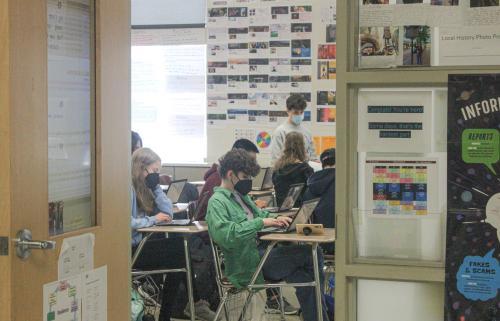
Dashing through the snow ONCE
Ben Cromer ’24 Sebastian Havira ’23
Have you ever wanted to go skiing or snowboarding with a bunch of friends? Well now you can, thanks to the LM Ski and Snowboard Club. From transportation to lift tickets, this new club has plenty to ofer. Jake Stoller ’24, co-president of the club, described the goal of the club as “bring[ing] together people with the common interest of skiing and snowboarding and hav[ing] fun. It doesn’t matter what grade you are in, if you’re advanced or a beginner, whether you want to ski or snowboard, everyone is welcome.” LM’s newest club has som ething for everyone, whether they are incredible at skiing or have never touched a pair of skis. Bringing additional people into the club is what the club strives to do. Its mission is to bring friends together over a common interest. Even if your friend has never seen a slope, bring them out and they might fnd it incredibly fun. These activities will take place locally at Blue Mountain Ski Resort in Palmerton, PA, a short hour and twenty minute drive away from LM. Blue Mountain is a great place for this club because they have the most terrain in the Pocono Mountains. This ski resort includes several Greens (the easiest slopes) as well as many Black Diamonds (the hardest slopes). They even have three bunny slopes to practice on if it would be your frst time ever clicking into skis or a board. Blue Mountain provides rentals which will allow those who don’t have their own equipment an opportunity to get their hands on some. These trips may not occur this year as it is already February and we are in the middle of the season, but the club will still host meetings to talk about skiing and boarding as well as planning and talking about what future
trips will entail. Listen for meeting announcements on the morning LMTV broadcast, where the co-presidents will go further in depth about what the club has to ofer and provide a chance for people to talk about their love of skiing and snowboarding. You can contact the club at skiclublm@ gmail.com and follow them on Instagram; their handle is @skiclublm.
I once remember the days feeling as bright as the sunshine could possibly beam. It was a time of innocence and excitement that never had any sort of limit to its emotion. The young colors
of the sky in all seasons expressed the products of nature. Wind, rain, snow, or sun; the colors were still bright to me. It was a time before everything; knowing others and their darkest sides, or exposure to the crimes of humanity. However, the bits of cluelessness still continued to grow smaller by the years. We all experienced, experimented, and encountered. The shock of stepping outside of our comfort zones was new to us all. I once remember the days of nothing. It was a time of blur, and blandness to the atmosphere. The rain’s puddles were the epitome of gloom and partial melancholy. By then, the space beside me, that once used to be crowded, began to construct an open lane of air to fow through. However, I still kept walking. What engaged me? The same thing was also happening to everyone else: less. It was less of everything and everyone. It was still gutwrenching knowing that the world that was once controlled by others, became our responsibility. Once they leave, we become. I once remember the days of fear. It was a time similar to the emergencies of the world, and constant crises. The cries of all the living trees and plants turned into a disturbing laughter. It was the center of a blooming universe, with the privilege of life being unpredictable. The tomorrows that we will forget and the yesterdays we could remember, depends on our future’s ability. The sun sets itself into the earth’s nose, and dies. As I sit here, remembering, the birth of a young foal happens, and the death of elders bloom. I understand now that we cannot idolize anything that must come our way, but remember the times we didn’t have control. The time of innocence, staring into a deep space, questioning our forever. Now grown up, the time of guilt, staring into a deep space, questioning our forever. I once remember those days, and you could as well.

Graphic by Alana Zahavy ’23/Staf
SIX MORE WEEKS OF WINTER... OLYMPICS
Ava Cohen ‘23
The Winter Olympics are back! Starting on February 4, the 24th Winter Olympics will take place in the beautiful city of Beijing. People from across the world will anxiously watch as their favorite athletes compete for the gold. As we get closer to the opening ceremony, there are some things you should know.
The 2022 Winter Olympics will feature seven new events: womens monobob (bobsledding), mixed team aerials (freestyle skiing), men’s and women’s big air (freestyle skiing), mixed team relay (short-track speed skating), mixed team event (ski jumping), and mixed team snowboard cross (snowboarding). These events were added in an efort to increase gender equality. The mixed team events will consist of equivalent amounts of male and female athletes who have already qualifed individually, or through relays. Additionally, the monobob is an event added just for women.
The National Hockey League and NHL Players’ Association have come to the decision to not participate. Due to the surge in COVID cases and the fact that ffty games have already been postponed in the regular season, it is no longer possible to attend. It is difcult to schedule this multitude of games considering the fve week quarantine period that players would have to spend in Beijing if they were to test positive while there. Players are upset especially since they have now missed out on two consecutive Olympics. Penguins star Sidney Crosby, although lucky enough to have competed in two Olympics thus far, says he “feel[s] for the guys who have missed multiple opportunities.” Some of these players will not have this opportunity again and it is simply out of their control. No spectators will be allowed at the games. Once again, COVID has put restrictions on our lives and it has been decided that only a select group of people from within the country will be allowed. These people will have to abide by China’s “countermeasures” which are more strict than the protocols for the 2021 Summer Olympics. So far Norway is leading in most winter olympic and paralympic medals at 368. In second place is the U.S. with 305, and then Germany with 240. We will see how this changes by February 20th when the 2022 Winter Olympics come to a close. Students at LM are super excited to watch! Junior Delaney Sill says she “can’t wait for the ice skating where they do a bunch of partner fips,” one of the most popular Winter Olympic events. Others are also looking forward to watching their favorite athletes compete, such as junior Andrew McCann, who will be cheering on Canadian hockey player Owen Power, along with the Unites States hockey team. I know that I will be watching the winter Olympics in Beijing, and you should too!
